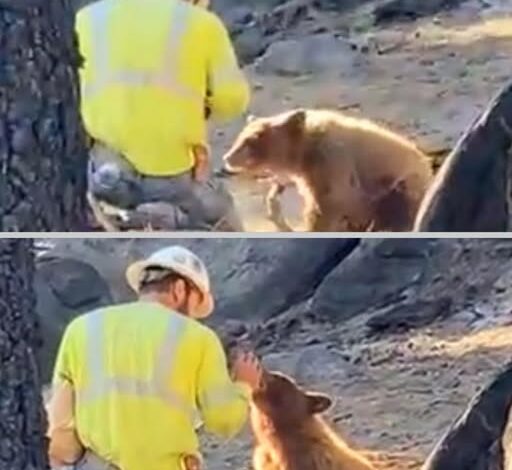The Man Who Went to Cut Trees and Found His Conscience Instead

Deep within British Columbia’s Great Bear Rainforest, where dense fog clings to towering cedar and hemlock, and the scent of ancient wood hangs thick in the air, the forest speaks in whispers — if one knows how to listen. Among the moss-covered roots and shadowed glades, life thrives in delicate balance, often unseen by human eyes.
Here worked an ordinary logger, a man trained in safety, protocol, and environmental respect. He was not an activist. Not a scientist. He was a newcomer, hired to help sustainably harvest timber while minimizing the impact on this pristine wilderness. Logging in the rainforest was a careful act of balance — providing livelihoods for families while preserving an ecosystem that had existed for thousands of years. For this man, it was honest, meaningful work. But one day, that balance between duty and conscience would be tested in a way he could never have anticipated.
While surveying a tract for selective logging, he noticed something unusual in the undergrowth: a slight depression near a tree base, fresh claw marks, and tufts of fur caught in the moss. Curious but cautious, he crouched down and realized he had stumbled upon a bear den. Inside, a mother bear and her cub rested in the dim quiet, their breathing slow and measured.
He did not panic. He did not approach. Instead, he relied on both his training and his conscience. He marked the GPS coordinates, carefully recorded his observations, and reported the den to his supervisors.
“We shouldn’t cut here,” he said. “She’s nesting. It’s not safe for her — or for us.”
Initially, his warning was respected. The crew altered the cut lines, leaving the area around the den untouched — a small oasis of life amid a growing grid of clear-cut land. For a short time, it seemed that compassion and economic necessity could coexist.
But pressures of production are relentless. Deadlines tightened, and management pushed forward. Orders came down to continue the logging operation, even in proximity to the den. The logger objected, insisting, “She’s still there. It’s too soon.”
Machines roared into life. Chainsaws buzzed, engines rumbled, and the forest trembled. Within days, the mother bear disappeared — driven away by the disturbance, perhaps permanently. The logger, having installed a trail camera to monitor the site, watched helplessly as the final footage captured only a shadow slipping into the trees. Then came silence. Days later, the cub appeared alone, wandering, sniffing the air and the empty ground, calling for a mother who would never return.
Every instinct told him to act. Every company policy forbade it. He waited, hoping against hope that the mother would return.